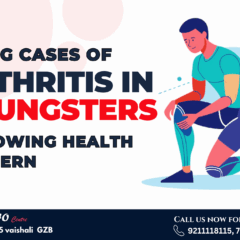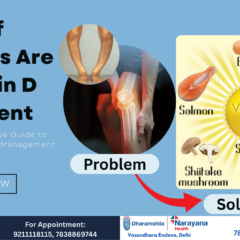Know All About ACL Injury and Treatment
An ACL (Anterior Cruciate Ligament) injury is among the most common and challenging knee injuries. This ligament is essential for stabilizing the knee and supporting movement, particularly during high-impact activities like sports. Dr. Mohit Madan, an experienced orthopedic surgeon at My Ortho Centre, breaks down everything you need to know about ACL injuries—from symptoms and causes to treatment and recovery.
What is an ACL Injury?
The ACL is one of the four main ligaments in the knee that connects the thigh bone (femur) to the shin bone (tibia). The ACL plays a vital role in maintaining knee stability and allowing a range of motions such as running, jumping, and pivoting. When the ACL is overstressed or twisted, it can tear or rupture, leading to an ACL injury.
Types of ACL Injuries:
- Grade 1: Minor sprain or stretching of the ACL.
- Grade 2: Partial tear or moderate injury.
- Grade 3: Complete tear or rupture, which often requires surgical intervention.
Causes of an ACL Injury
Dr. Mohit Madan explains that ACL injuries often result from movements that overstress or twist the knee. Common causes include:
- Sudden changes in direction (e.g., pivoting in sports like basketball or football).
- Stopping suddenly or landing awkwardly from a jump.
- Direct impact to the knee, often in contact sports.
- Muscle fatigue which reduces control over knee movements.
- Poor conditioning or lack of balance and core strength, increasing the risk of instability.
High-impact sports, including soccer, skiing, basketball, and gymnastics, are particularly associated with ACL injuries. Women athletes are also more susceptible due to anatomical and hormonal differences, as well as muscle imbalance factors.
Symptoms of an ACL Injury
Signs of an ACL injury often appear immediately after the injury and may include:
- A loud “pop” sound from the knee at the time of injury.
- Intense pain in the knee, often severe enough to halt activity.
- Swelling that typically develops within a few hours.
- Knee instability, feeling as though the knee is unable to support weight.
- Reduced range of motion, causing discomfort when bending or straightening the knee.
These symptoms may vary based on the extent of the injury, and some may experience a false sense of recovery due to intermittent pain. However, untreated ACL injuries can worsen and may lead to further knee complications.
Diagnosis of ACL Injuries
Diagnosing an ACL injury requires a physical examination, as well as imaging tests to assess the extent of the damage. Dr. Mohit Madan recommends:
- Physical Examination: A doctor will check for swelling, tenderness, and knee stability by moving the leg in different directions.
- MRI (Magnetic Resonance Imaging): The most definitive way to assess an ACL tear, as MRI scans provide detailed images of the soft tissues around the knee.
- X-rays: Though X-rays don’t show soft tissue damage, they help rule out fractures or bone injuries.
A prompt and accurate diagnosis is crucial to developing an effective treatment plan, particularly to prevent further injury or complications.
Treatment Options for ACL Injuries
The treatment for an ACL injury largely depends on the severity of the injury, as well as the patient’s lifestyle and activity level. Dr. Mohit Madan discusses the two primary treatment approaches—conservative (non-surgical) and surgical.
1. Conservative (Non-Surgical) Treatment
Non-surgical treatment may be an option for individuals with a Grade 1 or mild Grade 2 ACL injury or for those with a less active lifestyle. Conservative treatments can include:
- Physical Therapy: Targeted exercises strengthen the muscles around the knee, improving stability and restoring range of motion.
- Bracing: Wearing a knee brace offers extra support, reducing strain on the ACL while the ligament heals.
- Pain Management: Anti-inflammatory medications can help reduce swelling and relieve pain during recovery.
In many cases, physiotherapy plays a significant role, helping patients return to low-impact activities. This method is not typically recommended for athletes or individuals requiring a high level of physical activity, as it may not provide full stability.
2. Surgical Treatment
For those with a complete ACL tear (Grade 3) or those aiming to return to high-impact sports, surgical intervention is often necessary. ACL reconstruction surgery is the most common procedure, involving the replacement of the torn ligament with a graft, which can be taken from the patient’s own body (autograft) or a donor (allograft).
ACL Reconstruction Surgery Overview:
- Procedure: The torn ACL is removed and replaced with a tendon graft. This graft serves as a scaffold, allowing new ligament tissue to grow.
- Types of Grafts: Common graft options include hamstring tendon, patellar tendon, and quadriceps tendon.
- Recovery Time: Patients typically regain basic mobility within a few weeks, but full recovery for high-impact activities can take anywhere from 6 to 12 months.
Rehabilitation and Recovery
According to Dr. Mohit Madan, post-treatment rehabilitation is critical to ensuring a successful recovery and minimizing the risk of re-injury. The recovery process generally includes the following stages:
- Initial Recovery (First 2–3 Weeks):
- Rest and manage swelling with ice packs and anti-inflammatory medication.
- Gradual movement exercises to prevent stiffness.
- Strengthening Phase (4–12 Weeks):
- Supervised physical therapy to strengthen muscles around the knee.
- Range of motion exercises to increase knee flexibility.
- Advanced Rehabilitation (3–6 Months):
- Progressively challenging exercises to regain balance and agility.
- Functional training, especially for athletes, to prepare for high-impact activities.
- Return to Activity (6–12 Months):
- Advanced drills and exercises to simulate sports or daily activities.
- Clearance from the physician to ensure the knee is stable and strong.
Recovery can vary for each patient, but following the prescribed rehabilitation plan is crucial for optimal results and a full return to activity.
Preventing ACL Injuries
While ACL injuries can’t always be avoided, Dr. Mohit Madan highlights a few preventive measures that can help reduce the risk:
- Strength Training: Strengthening leg muscles, particularly the hamstrings and quadriceps, helps stabilize the knee.
- Balance Exercises: Activities that enhance balance and agility can improve control and prevent awkward movements.
- Proper Techniques: Learning the correct techniques for jumping, landing, and pivoting is essential, particularly for athletes.
- Flexibility Exercises: Stretching before and after workouts or sports reduces tension in the muscles and helps prevent injuries.
Final Thoughts from Dr. Mohit Madan
ACL injuries are significant but treatable, and with advancements in surgical and rehabilitation techniques, patients can often return to their pre-injury levels of activity. Dr. Mohit Madan emphasizes the importance of early diagnosis and a comprehensive treatment approach. Whether through conservative management or surgical reconstruction, ACL injuries can be managed effectively, allowing individuals to continue living active lives.
If you or a loved one suspects an ACL injury, don’t hesitate to consult with Dr. Mohit Madan at My Ortho Centre for expert advice and personalized care options.
For further questions or to schedule a consultation with Dr. Mohit Madan, contact My Ortho Centre at +917838869744.


